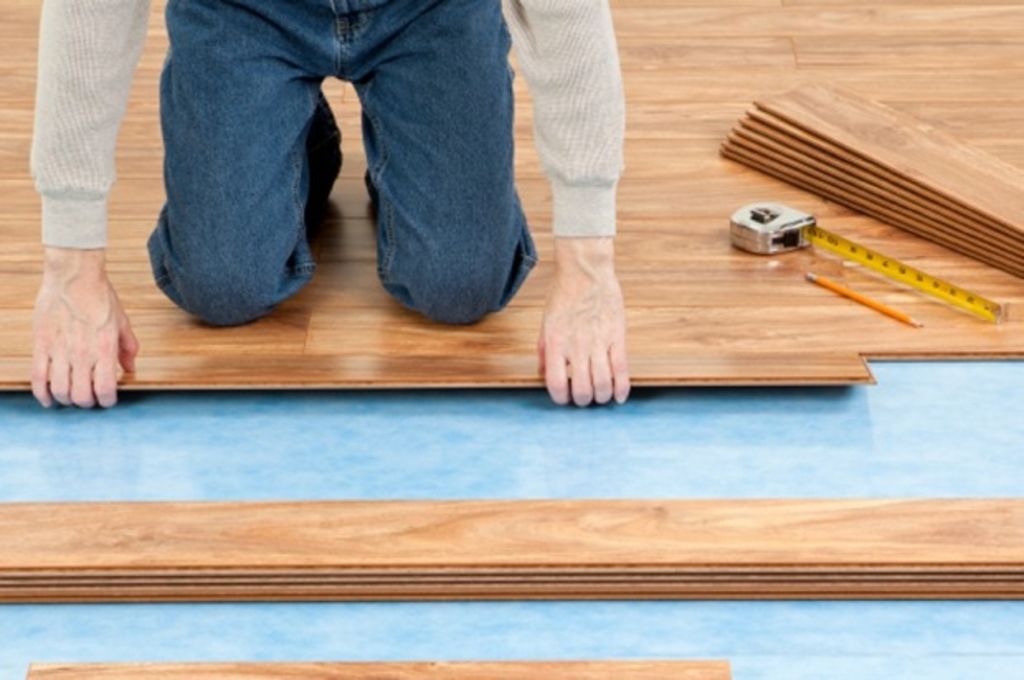Jane Eyles-Bennett shares her tips on how to lay timber floorboards

Lisa asks: “I’m thinking about installing timber flooring in our home. Any tips?”
If you’re considering timber flooring for your home, there are a few options.
Installation of solid timber flooring is perhaps best left to the experts. This option is expensive but results in truly beautiful flooring. Alternatively, there are cheaper floating floor systems, comprising of solid and laminated timber, that a capable DIYer can install themselves, and be very happy with the result.

While solid timber flooring can be a challenge to install, floating floor systems comprising of solid and laminated timber can provide cheaper and easier options. Photo: Spaces Images
Here are some tips and terms that will help you during the planning and execution stages of the project:
- Floating floors are installed over existing floors, and are either solid timber or consist of a base of plywood or MDF with a veneer of timber or a laminate that looks like timber.
- Pre-finished products are available, meaning that they are already sanded and sealed, saving time and effort during the installation process.
- Many floating floor systems are available in tongue and groove profiling. This means that one side of a board has a protruding ‘tongue” that slips into a matching groove in the next board. This gives a nice solid fit that prevents movement once all the boards are laid.
- Another special profiling system allows for “secret nailing”, where the nail is driven through the “tongue” into the floor substrate. The next board then fits over the tongue, effectively hiding the nail.
- When ordering material, keep in mind the following definitions: the area of a room in square metres is the length of the room multiplied by the width of the room (in metres); lineal metres is the area in square metres divided by the width of the board chosen (in metres).
- Allow for wastage, which is the material not used due to imperfections in pattern or structure – 10 per cent is a fair estimate.
- As wood is a hygroscopic material, it releases and absorbs moisture from its environment. This means that your flooring material will expand and contract as the moisture content of the surrounding area varies. To ensure that you acclimatise the material properly, try to store the timber in situ for a few weeks prior to installation.
- Don’t lay floorboards from one room to another, and use expansion joints between the boards and the walls to allow for a small amount of expansion and shrinkage.
- You must ensure that the existing floor is level, clean and dry. Don’t lay your floor over a recently poured concrete floor until absolutely certain it is fully dry – this can take months. If the existing floor is not level, grind down high spots, and fill low spots.
- The new floor will sit higher than the base floor – you will need to check placement of skirting boards and gaps under doors. Instead of cutting skirting boards, run beading around the edge of the floor.
- Lay boards lengthways with cut edge against the longest wall, and tap panels into place with a rubber mallet and block.

There are many pre-finished wooden flooring options to help save time during the installation process. Photo: domin_domin
These are some simple tips to get you started. To complete a project you will truly be proud of, talk to suppliers and tradies, do some research, and make sure the preparation is to a really high standard. Floating timber floors allow you to choose the material that you like, while giving a truly natural finish to each room.
Jane Eyles-Bennett is an interior designer and renovation consultant. She’s the creator and driving force behind Hotspace Consultants and has consulted on more than 550 property renovations.
We recommend
We thought you might like
States
Capital Cities
Capital Cities - Rentals
Popular Areas
Allhomes
More







